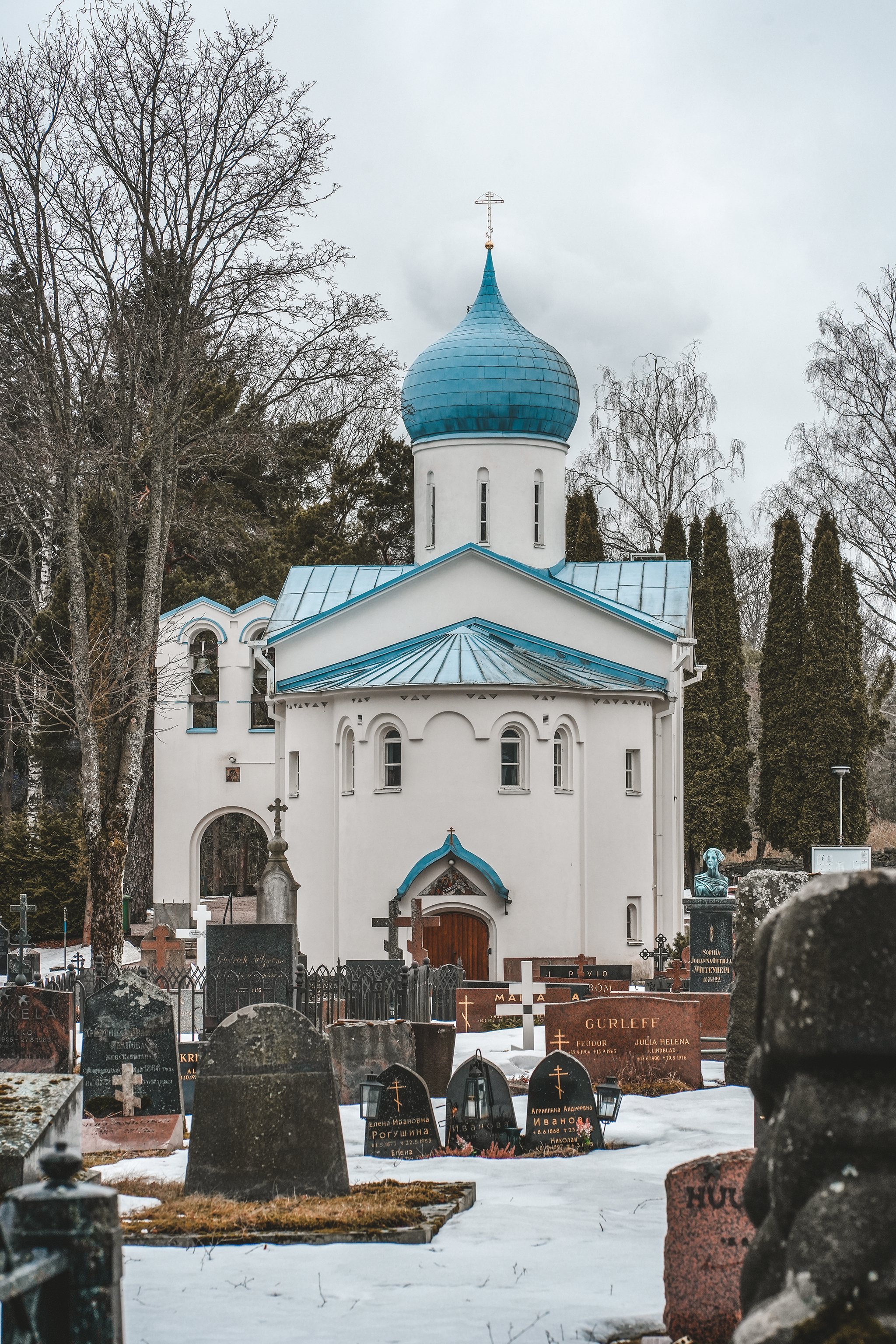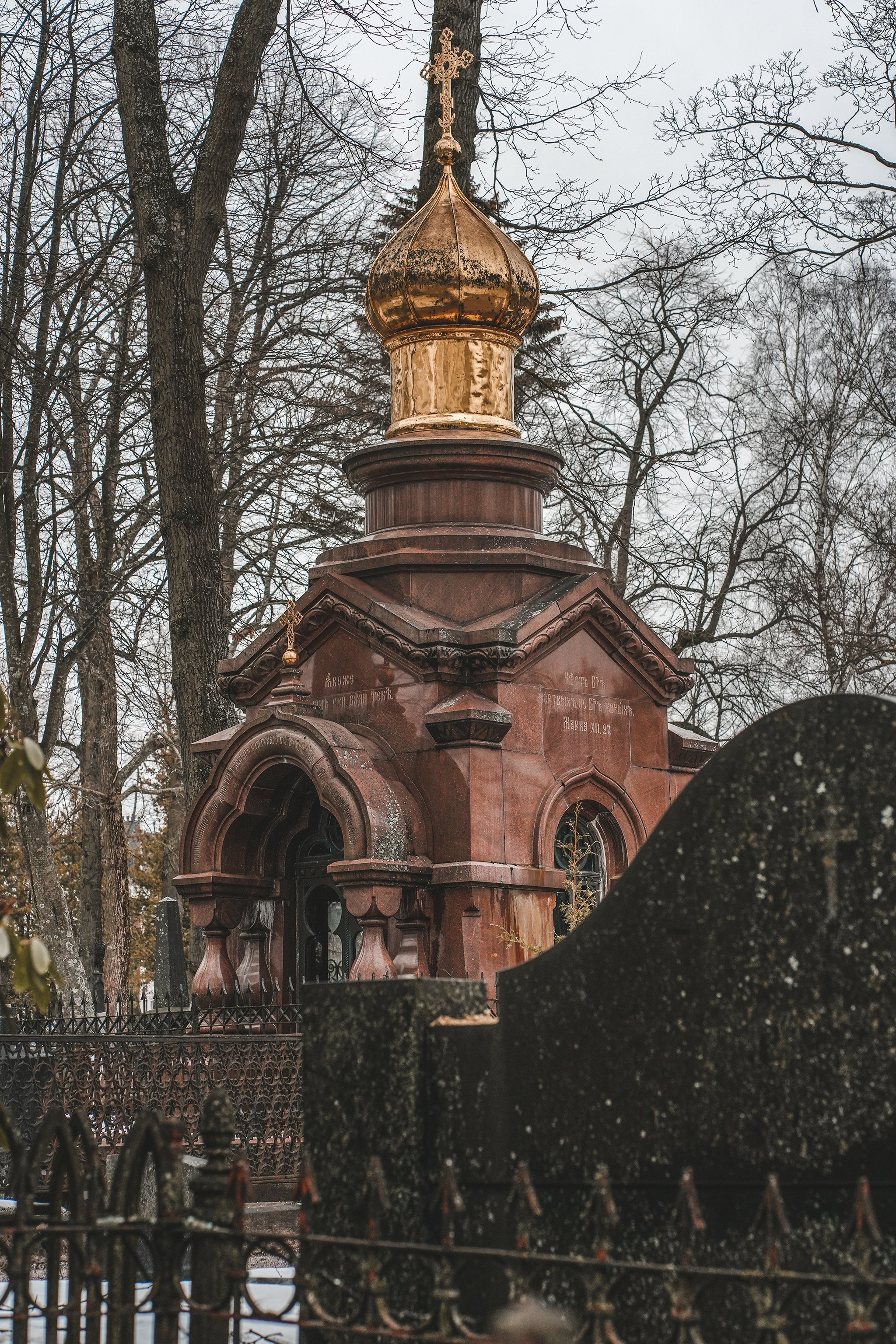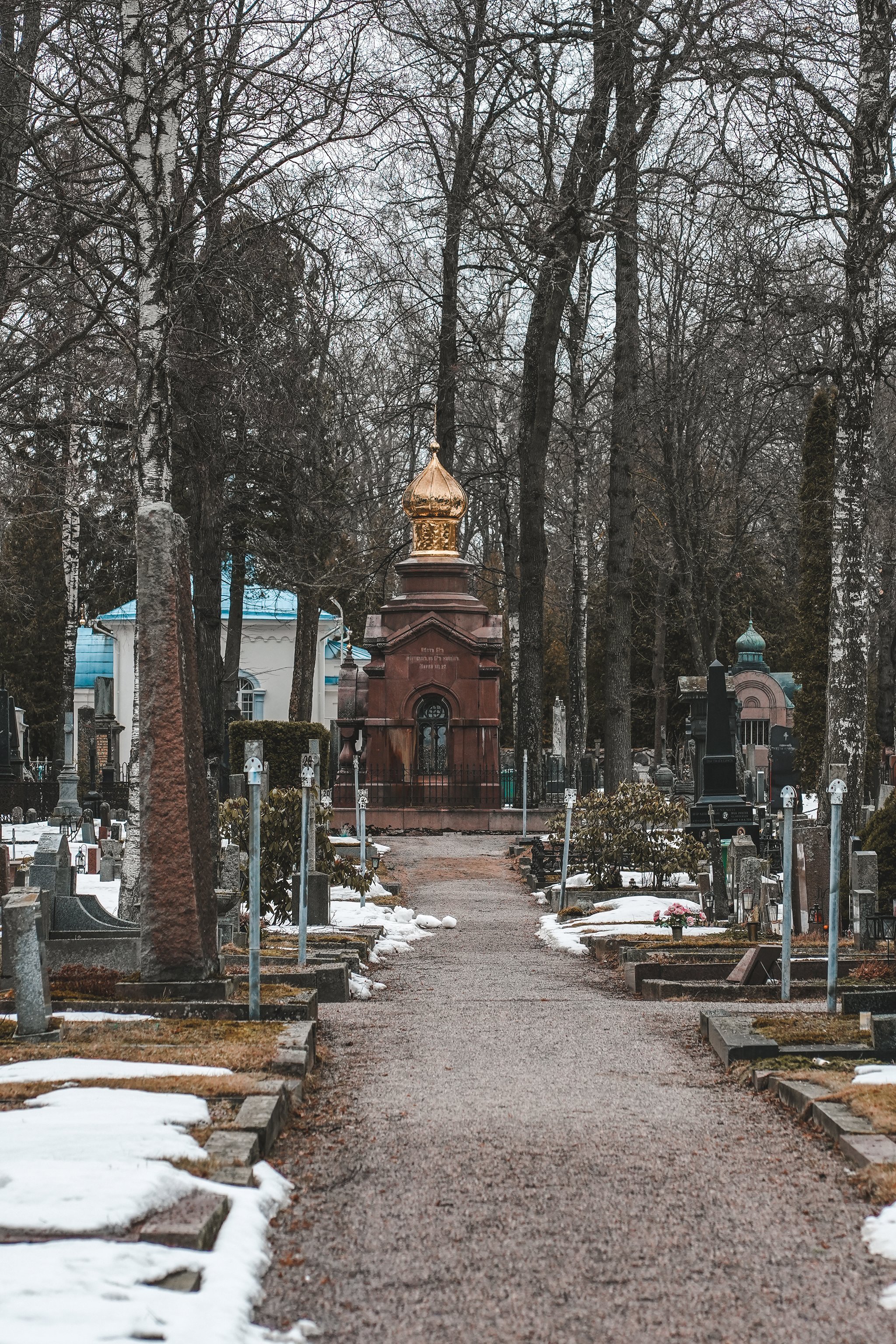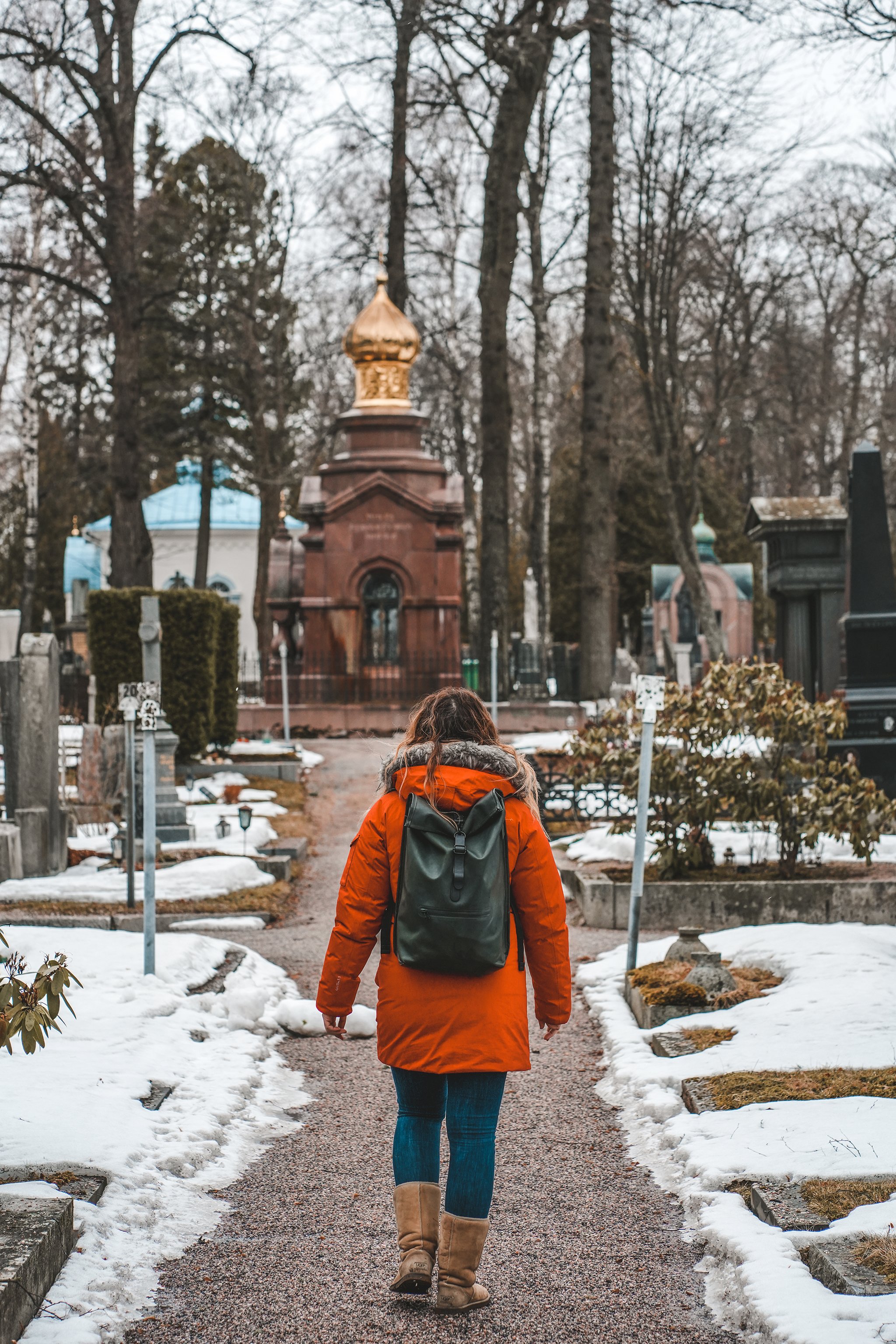Helsinki Orthodox cemetery
The large Hietaniemi cemetary is divided into several sections according to religion or the status of the deceased. The white St.Elia church with blue roof and a golden spire dominates the Orthodox cemetary visible at the busy corner in Ruoholahti. The main building is accompanied by a small chappel both designed by Ivan Kudrjavzek in 1958 though the architectural style looks much older. Half of the graves have tombstones in Cyrillic letters, some date back 200 years.
“This quite small Orthodox church for Saint Prophet Elias is located between Hietaniemi and Helsinki Orthodox Cemetery.
“You can get Greek vibes from the white-blue church.”
A series of catacombs, or underground burial passageways, have been found beneath Helsinki's Orthodox cemetery.
Since investigations began in July 2013, researchers have confirmed at least a dozen catacombs under the Hietaniemi graveyard. Using ground-penetrating radar and metal spikes, they have determined thatthe chambers have brick walls and stone ceilings.
The chambers range from 60 centimetres to five metres across. About 20 other possible sites have been identified.
“Probably most of them are actual catacombs as well,” says Tero Hokkanen, a geophysicist from Aalto University who has been working on the study.
Contents remain unknown
Cemetery officials say it is important to determine where such underground structures are in order to avoid cave-ins when heavy equipment is used in the area. Also, since the tops of some of the catacombs are very close to the surface, these sections cannot be used for new graves.
The oldest catacombs are thought to date back to the 1800s. So far none have been opened.
Helsinki’s Greek Orthodox parish is in discussions with the National Board of Antiquities about the chambers. The parish hopes to find outside funding for closer examination of the underground rooms – whose contents remain a mystery.





